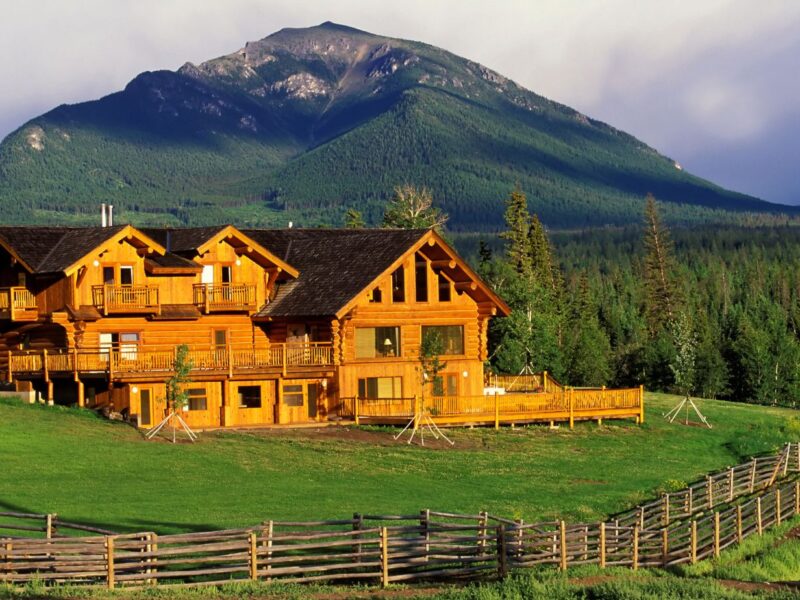Ranch landscapes offer vast and picturesque outdoor spaces that require careful planning and design to maximize their potential. A ranch landscape architect specializes in transforming these expansive environments into functional, beautiful, and sustainable outdoor spaces. This blog post will delve into the role of a ranch landscape architect, the key elements of ranch landscape design, and tips for creating a stunning and practical outdoor space.
The Role of a Ranch Landscape Architect
A ranch landscape architect combines the art and science of landscape design to create outdoor spaces that enhance the natural beauty of the land while meeting the functional needs of the property. Their responsibilities include:
Site Analysis
A thorough site analysis is the first step in any landscape design project. This involves assessing the existing conditions of the land, including topography, soil types, climate, vegetation, and water sources. Understanding these factors is crucial for creating a design that works in harmony with the natural environment.
Design Development
Based on the site analysis and the client’s vision, the landscape architect develops a comprehensive design plan. This includes the layout of various elements such as gardens, water features, pathways, recreational areas, and structures. The goal is to create a cohesive and functional outdoor space that reflects the client’s lifestyle and preferences.
Plant Selection
Choosing the right plants is essential for creating a sustainable and visually appealing landscape. The landscape architect selects native and drought-tolerant plants that thrive in the local climate, reducing the need for excessive watering and maintenance. Plant selection also considers factors like color, texture, and seasonal interest.
Hardscape Design
Hardscape elements such as patios, walkways, retaining walls, and outdoor kitchens are integral parts of a ranch landscape. The landscape architect designs these features to blend seamlessly with the natural surroundings and enhance the usability of the outdoor space.
Water Management
Effective water management is critical in ranch landscapes, especially in arid regions.

The landscape architect designs irrigation systems, rainwater harvesting solutions, and drainage systems to ensure the efficient use of water resources and prevent erosion.
Project Management
The landscape architect oversees the implementation of the design, coordinating with contractors, suppliers, and other professionals to ensure the project is completed to the highest standards. They also manage the budget and timeline, ensuring the project stays on track.
Key Elements of Ranch Landscape Design
Sustainable Practices
Sustainability is a cornerstone of modern ranch landscape design. This includes using native plants, conserving water, and employing eco-friendly materials. Sustainable practices not only protect the environment but also reduce maintenance costs and enhance the resilience of the landscape.
Outdoor Living Spaces
Creating functional and inviting outdoor living spaces is a key aspect of ranch landscape design. This can include patios, decks, outdoor kitchens, fire pits, and seating areas. These spaces are designed to provide comfort and enjoyment while taking advantage of the natural beauty of the surroundings.
Gardens and Plantings
Gardens and plantings add color, texture, and visual interest to the landscape. The landscape architect designs various types of gardens, such as flower gardens, vegetable gardens, and herb gardens, tailored to the client’s preferences and the site’s conditions.
Water Features
Water features such as ponds, streams, and fountains add a tranquil and dynamic element to the landscape. They can also provide habitat for wildlife and help with microclimate regulation. The landscape architect designs water features that are both aesthetically pleasing and functional.
Pathways and Trails
Well-designed pathways and trails enhance the usability and accessibility of the ranch. They connect different areas of the property and encourage exploration. The landscape architect uses materials that blend with the natural environment and designs paths that follow the land’s contours.
Fencing and Boundaries
Fencing and boundaries define the property and provide security. They can also be used to manage livestock and create designated areas for different activities. The landscape architect selects materials and designs that complement the overall aesthetic of the ranch.
Recreational Areas
Recreational areas such as swimming pools, sports courts, and playgrounds add functionality and enjoyment to the landscape. These spaces are designed to cater to the client’s lifestyle and provide opportunities for outdoor activities.
Tips for Creating a Stunning Ranch Landscape
Embrace the Natural Landscape
Work with the natural features of the land, such as slopes, trees, and water sources, to create a harmonious design. Embracing the natural landscape enhances the beauty and sustainability of the outdoor space.
Use Native Plants
Native plants are well-adapted to the local climate and soil conditions, making them a sustainable and low-maintenance choice. They also support local wildlife and contribute to the biodiversity of the area.
Prioritize Water Conservation
Implement water-saving practices such as drip irrigation, rainwater harvesting, and mulching to conserve water and reduce maintenance.

Designing with drought-tolerant plants and efficient irrigation systems ensures a resilient landscape.
Create Functional Spaces
Design outdoor spaces that cater to your needs and lifestyle. Whether it’s an outdoor kitchen for entertaining, a vegetable garden for fresh produce, or a cozy seating area for relaxation, functional spaces enhance the usability of the landscape.
Incorporate Hardscape Elements
Integrate hardscape elements like patios, walkways, and retaining walls to add structure and functionality to the landscape. Use natural materials such as stone and wood to create a cohesive and organic look.
Plan for Seasonal Interest
Design the landscape to offer visual interest throughout the year. Choose plants that provide seasonal color, texture, and variety to ensure the outdoor space remains vibrant and attractive in every season.
Consider Wildlife Habitat
Create habitats for local wildlife by incorporating elements such as bird feeders, nesting boxes, and water features. Supporting wildlife adds to the ecological value of the landscape and enhances the overall experience.
Conclusion
A ranch landscape architect plays a crucial role in transforming outdoor spaces into functional, beautiful, and sustainable environments. By embracing the natural landscape, using sustainable practices, and creating tailored designs, they can craft outdoor spaces that reflect the unique character of the ranch and meet the needs of its owners. Whether you’re looking to enhance your existing ranch or develop a new property, working with a skilled landscape architect ensures a well-planned and executed project that maximizes the potential of your land. Investing in professional landscape design not only enhances the aesthetic appeal and functionality of your outdoor space but also contributes to the long-term sustainability and value of your property.






